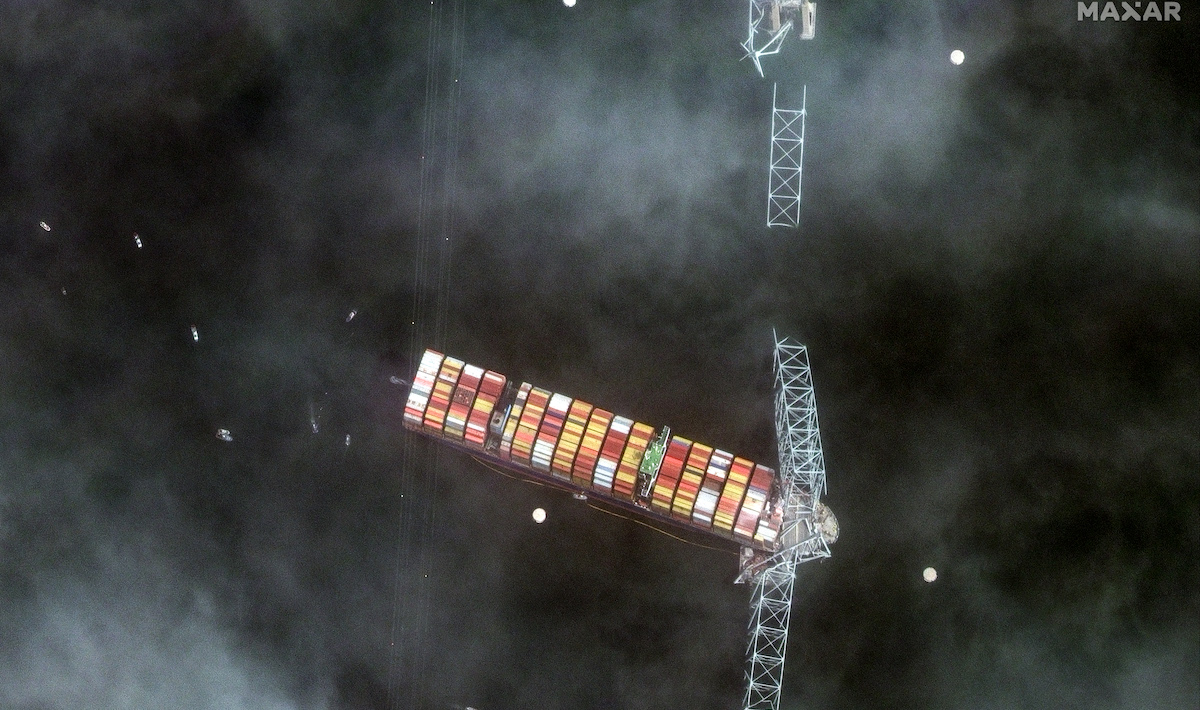Investigators began collecting evidence Wednesday from the cargo ship that plowed into Baltimore’s Francis Scott Key Bridge and caused its collapse.
The U.S. Coast Guard said the ship, named Dali, underwent “routine engine maintenance” in port beforehand. U.S. Coast Guard Rear Admiral Shannon Gilreath added that they were not informed of any problems. The ship collided into a support pillar early Tuesday, causing the span to buckle into the river.
Watch NBC6 free wherever you are
In the waters below divers searched through twisted metal for several construction workers who plunged into the harbor. The bodies of two of six workers were recovered Wednesday. The others are presumed dead.
Here's what to know about the cargo ship Dali:
Get local news you need to know to start your day with NBC 6's News Headlines newsletter.
How big is the Dali cargo ship?
If stood upright, the Dali would reach almost to the top of the Eiffel Tower in Paris or about two-thirds of the way up the Empire State Building in New York.
It can carry the equivalent of almost 10,000 standard-sized metal shipping containers, and at the time of the accident was carrying nearly 4,700 containers. But while those figures are impressive, the Dali pales in comparison to the world's largest container ships, which can carry more than 24,000 containers. There are environmental and economic advantages to operating giant container ships, but their sheer size and weight make them difficult to maneuver and stop — especially when something goes wrong.
Dali length: 984 feet (300 meters). Weight: 95,000 tons when empty.
Capacity: 10,000 20-foot (6-meter) containers.
Who owns the Dali cargo ship?
The ship shares a name with one of history's most celebrated artists, Spanish surrealist painter Salvador Dali.
Built by South Korea's Hyundai Heavy Industries, one of the world's largest shipbuilders, the Dali was launched in late 2014. It's owned by Grace Ocean Private Ltd, flies a Singapore flag and is powered by diesel engines.
Danish shipping giant Maersk had chartered the Dali for a planned trip from Baltimore to Sri Lanka, but the ship didn't get far.
See the moment the Baltimore bridge collapses after cargo ship hits support pier
What happened with the Dali cargo ship the day of the Baltimore bridge collision?
The crew aboard the ship sent a mayday call early Tuesday saying they had lost power and had no control of the steering system. Minutes later, the ship rammed one of the bridge's columns, causing the entire structure to collapse within seconds.
The ship was moving at about 8 knots, or 9 mph (15 kph). The mayday gave just enough time for authorities to stop bridge traffic and likely prevent more deaths, but not enough time to clear the construction crew that was filling potholes on the bridge. Divers on Wednesday recovered the bodies of two of the workers.
All of the nearly two dozen crew members from the Dali were accounted for after the accident, with one taken to a hospital with minor injuries.
The Dali passed a June 2023 inspection in Chile. A faulty pressure gauge for the fuel heaters was identified but fixed before the vessel left the port, according to authorities. The Dali was then inspected in September by the U.S. Coast Guard in New York, and no problems were found. Before it left Baltimore, the ship underwent routine engine maintenance, according to the Coast Guard.
Federal and state officials say the crash appears to be an accident.
The Coast Guard has downloaded the voyage data recorder and sent it to the National Transportation Safety Board, which is building a timeline of what led to the crash, and a preliminary report is expected in the coming weeks. Singapore also plans to carry out its own investigation, which it says will be to identify lessons for the future rather than determine liability.
In addition to trying to clear the channel floor of the bridge debris, officials will need to assess the damage to the Dali and make sure it doesn’t leak fuel or sink. Investigators found damage to at least 13 containers on the ship.
The Dali will then likely be towed back to the port and the cargo offloaded.
Transportation Secretary Pete Buttigieg says it’s too early to say how long it will take to reopen the Port of Baltimore or replace the destroyed bridge. He noted it initially took five years to build the bridge.



